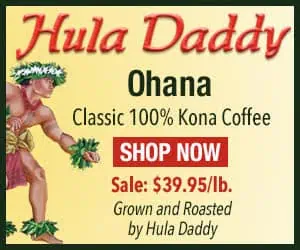Next to the coffees with European names, you may note coffees that have a similar degree of darkness and carry non-European names, such as Sumatra, Kenya, or Mexican. Unlike the coffees with European names, these coffees are usually brought to about the same degree of roast, or to what the roaster feels is the optimum roast to bring out the distinctive qualities of the coffee. The determining difference between these coffees is not the roast, but the origin of the bean. A coffee labeled Sumatra, for instance, should consist entirely of beans from a single country, Sumatra. Since coffee can be grown successfully only in or very near the tropics, such single-origin coffees tend to carry names of an exotic and sultry timbre.
Single-origin coffees, in addition to the name of the country in which they originated, often carry qualifying names: Guatemala Antigua, Kenya AA, Brazil Bourbon Santos, Sumatra Mandheling, Costa Rica La Minita. Most of these qualifying terms are either grade designations (AA), or market names referring, directly or indirectly, to coffee-growing regions (Antigua, Mandheling, Santos). A few, such as Bourbon, describe a botanical variety of Coffea arabica. And more and more often, the specific name of a particular farm, estate or cooperative (in this case La Minita) will appear.










